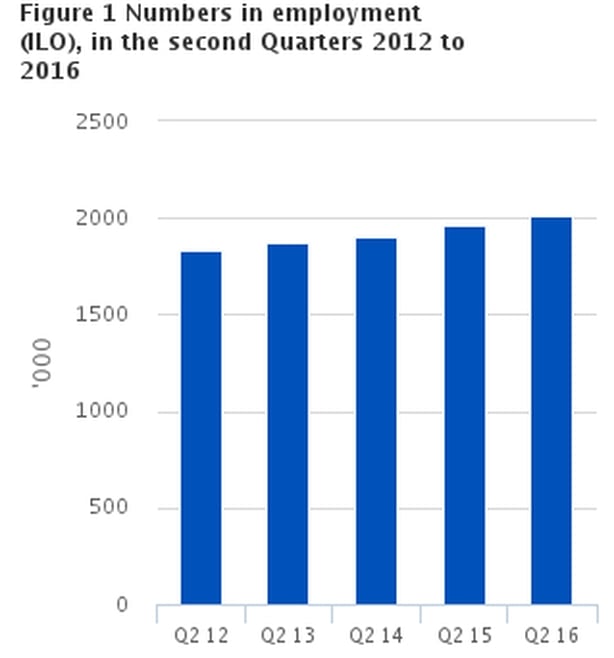More than two million people are in employment in Ireland for the first time since the first quarter of 2009, according to latest figures from the Central Statistics Office.
There was annual increase of 2.9% or 56,200 in the number of people with jobs between April and June, bringing total employment in the country to 2,014,900.
This compares with a high of around 2.16 million people at work immediately prior to the onset of the financial crisis here in 2008.
On average, around 1,000 jobs per week have been added in the economy since the beginning of the year.
During the second quarter, the number of people in full-time employment rose by 44,900 (3%), while there was an increase in part-time employment of 11,400 (+2.5%).
On a seasonally adjusted basis, employment increased by 20,000 (1%) over the previous quarter.

The seasonally adjusted unemployment rate was unchanged between April and June at 8.4%.
According to the CSO, unemployment decreased by 23,400 (11.1%) in the three months to June, bringing the total number of people unemployed to 187,800.
This is the sixteenth quarter in succession where unemployment has declined on an annual basis.
The long-term unemployment rate decreased from 5.5% to 4.4% over the year to Q2 2016.
Long-term unemployment accounted for 51.1% of total unemployment in Q2 2016 compared with 56.1% a year earlier and 57.6% in the second quarter of 2014.
Meanwhile, the labour force in the second quarter was 2,202,700, representing an increase of 32,800 (1.5%) over the year.
The number of people not in the labour force between April and June was 1,434,900 - a decrease of 2,200 (0.2%) over the year.
Commenting on the figures, Minister for Finance Michael Noonan said: "We have now seen 15 consecutive quarters of employment growth.
"This growth remains broad-based, with 12 of the 14 sectors reported by the CSO showing annual growth.
"Creating jobs for our people means they can contribute to a better life for themselves and a fairer society for all of our people."
Mr Noonan added the Government's "ambition is to help create 200,000 new jobs by 2020, including 135,000 outside of Dublin".
The figures show that the sharpest increases in the second three months of 2016 were in administrative & support services and construction.
Davy economist David McNamara pointed out that the number in employment at just over 2 million is still nearly 7% below the peak of 2.16 million in 2007, but above 2 million for the first time since the first three months of 2009.
The CSO also revised its unemployment rate for July from 7.8% to 8.3%.
"This was due to a sharp increase in the labour force rather than a pick-up in newly unemployed persons," David McNamara explained.
As the figures concentrate on the period just ahead of or in the immediate aftermath of the vote by Britain to leave the EU, it's too early to capture any indicators as to whether Brexit has had any impact on employment prospects.
"It will take some time before we know the full impact of the vote on the economy," Fergal O'Brien, Director of Policy with Ibec said.
"Clearly some sectors, particularly those exporting to the UK, are feeling intense pressure from the fall in sterling and other Brexit-related factors," he added.

